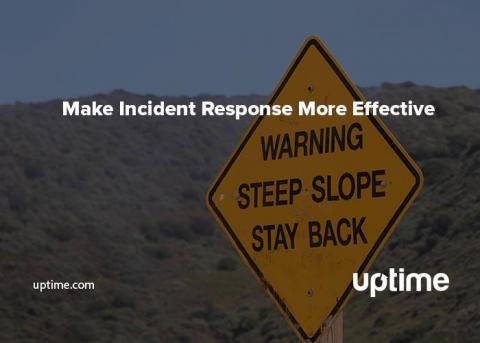Operations | Monitoring | ITSM | DevOps | Cloud
Incident Response
OpsRamp Introduces The Future of Incident Response: Harnessing Machine Learning and Data Science to Predict and Prevent IT Outages
How Do I Add a Major Incident Response to an Existing Integration? - Ask Adam
10 questions teams should be asking for faster incident response
2019 and 2020 were worlds apart. Our entire ways of working, living, socializing, and learning were changed almost overnight. Over the last 18 months, technical teams have had to double down on all their digital efforts to help their customers adapt to the new normal. At the same time, teams were responsible for more unplanned work than ever as incidents steadily rose. For the first time, we’ve created the State of Digital Operations Report which is based on PagerDuty platform data.
A Question of When vs If: The Need for Your Security Incident Management Plan
Should all incidents be treated the same? Seems like a simple question, but the answer can have big implications. Think about an employee who contacts the service desk, complaining they can’t log onto their email. If the issue is due to a ‘stale’ password, dropped connection or configuration issue after an update for the email server, then the impact on the organization can be quantified to the lost productivity for the impacted employee or employees.
How Alert Notifications Make Incident Response More Effective
HR people have a saying: right person, right place, right time, meaning that the right resources can make all the difference when it counts. The same goes for Incident management and response, where very often the wrong person, place, or time can contribute to mounting catastrophe. As systems grow, the right person really can make the difference during an outage simply due to command or knowledge of the system.
How MBTA modernized incident response to reduce alert fatigue and improve collaboration
Citizens utilize mobile and consumer-facing applications in everyday life, so it’s no surprise that they demand seamless access and high availability of government services online. Whether it’s making payments or applying for benefits, citizens and constituents alike expect these services to be available around the clock.
Kemp Flowmon ADS and Check Point Integration: Automated incident detection and response *full video*
Hear From Product Incident Response Lightning Talk
Demystifying the Hype Around XDR
Extended Detection and Response (XDR) has generated a lot of buzz recently with press, analysts, and even customers. There’s no denying that, at face value, its promise of reduced complexity and cost while increasing detection and response is alluring. As security teams look to modernize their security tooling, they’re also looking for solutions to some of their largest challenges. Is XDR the answer? What is XDR, exactly, and how do you determine if it’s right for your organization?











